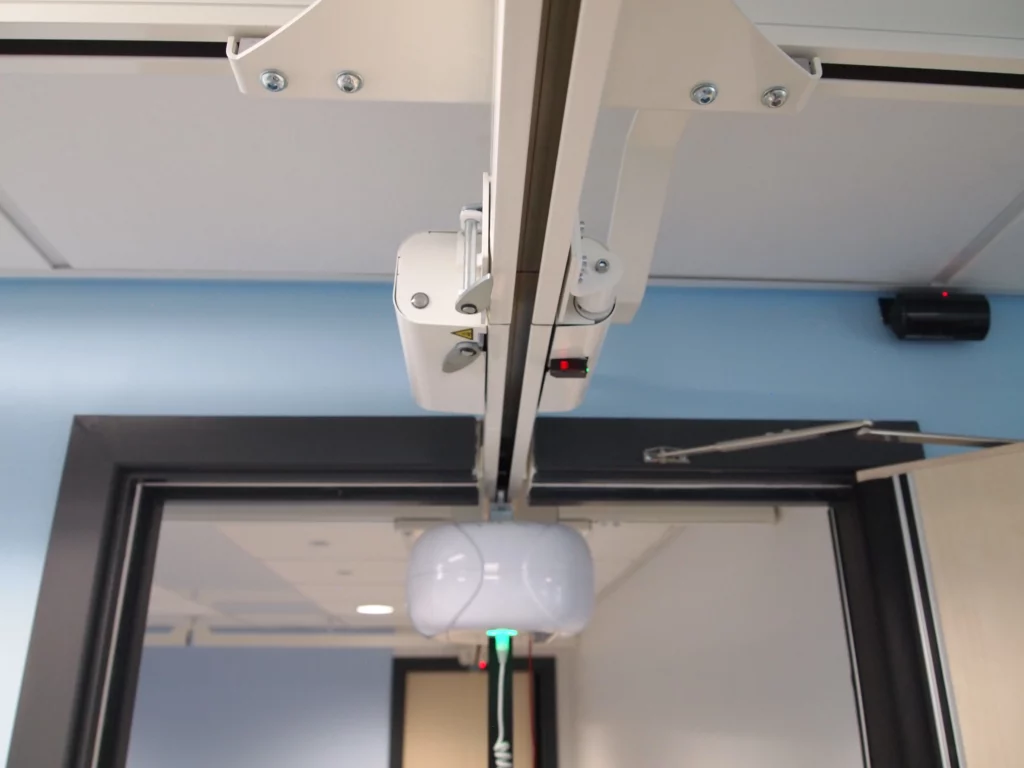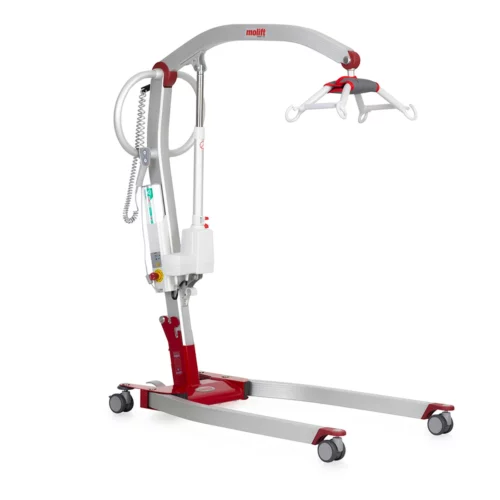Hoist Meaning, Uses and Types: What is a Hoist?
When it comes to moving heavy objects or people safely, a hoist is an essential piece of equipment. Whether in healthcare, construction, or industrial settings, hoists are designed to lift and lower loads with minimal effort and maximum safety.
But what is a hoist, exactly? This guide will help you understand the hoist definition, its various types, and how hoisting equipment is used across different industries.
Define hoist: what does hoist mean?
The word hoist means to raise or lift. Today, the term is commonly used in both everyday language and technical fields, but especially in healthcare settings. Patient lifting hoists are used to lift and move patients between locations safely and comfortably.
What is a hoist used for?
A patient hoist helps caregivers lift and move individuals with limited mobility. This may include transfers from beds to chairs, wheelchairs to toilets, or even into and out of vehicles. The use of a hoist reduces physical strain on carers and helps maintain patient dignity and safety.
For more insights on patient handling, check out our blog on identifying when someone needs hoisting.

Choosing the right hoist
When selecting a hoist, it’s important to consider:
- The weight and size of the person or object to be lifted
- How often will the hoist be used
- The environment (home, hospital, construction site)
- Whether a fixed or mobile hoist is more suitable
- Accessibility to ceilings or walls for installation
A professional assessment is highly recommended, particularly for patient hoists. To help streamline this process, read our complete guide on how to choose the right hoisting equipment for you.
Types of hoisting equipment
There are several types of hoisting equipment available, depending on the need:
Mobile Hoists
Also called floor hoists, these are wheeled units that can be moved between rooms. A sling is attached to the hoist to lift the individual. They are ideal for domestic settings or care homes where portability is key.
Ceiling Track Hoists
Installed on tracks fixed to the ceiling, these hoists allow for smooth and safe transfers across rooms without taking up floor space. They are a permanent, discreet solution in both hospitals and private homes. These systems can be connected from room to room using magnetic coupling systems.

One of the other major features is the inclusion of a gate system.
To see how a ceiling track works, check out our training video below:
Wall-Mounted Hoists
These are attached to walls and can swivel for side-to-side movement. They’re suitable where ceiling installation isn’t possible. Unlike wall-mounted hoists, like the Integralift, do not interfere with ceiling-mounted ward curtains.
The Integralift also has the benefit of being able to be installed as a bedhead hoist unit, or it can be fitted with wardrobes, bedside cabinets and even foldable beds for the patient’s friends and relatives.
Check out the Integralift in action by watching our case study video below with St Andrew’s Hospice.
Safety, regulations, and maintenance
In the UK, all hoisting equipment used for lifting people must comply with the Lifting Operations and Lifting Equipment Regulations 1998 (LOLER). This legislation requires that:
- Equipment is thoroughly examined every six months
- Regular servicing is conducted by a competent professional
- Records of inspections and maintenance are kept
Failing to maintain hoists properly can result in injury, equipment failure, and legal consequences. Find out more about ceiling track hoist servicing and maintenance.

Summary: why hoists matter
Whether you’re caring for a loved one, managing a construction site, or working in manufacturing, understanding what a hoist is and how it functions is essential. Investing in the right hoisting equipment improves safety, efficiency, and care standards.
Always consult a professional to ensure compliance and safety if you’re considering installing a hoist or upgrading existing lifting equipment. With proper selection and maintenance, hoists can greatly improve quality of life and workplace functionality.
FAQs
What is a hoist?
A hoist is a mechanical device used to lift or lower people or heavy objects using a rope, chain, or motorised system. Common types include patient hoists, ceiling hoists, and construction hoists.
What does hoist mean in healthcare?
In healthcare, a hoist refers to a lifting aid used to move patients safely between positions, such as from a bed to a chair, reducing strain on carers and improving patient comfort.
What are the different types of hoists?
There are several types, including mobile hoists, ceiling hoists, wall-mounted hoists, manual hoists, and powered hoists. The best choice depends on the environment and user needs.
What is hoisting equipment used for?
Hoisting equipment is used to raise and lower loads safely in various settings, such as lifting patients in care environments or transporting materials on construction sites.
How often should a hoist be inspected?
In the UK, hoists used to lift people must be inspected at least every six months under LOLER regulations to ensure safety and compliance.




